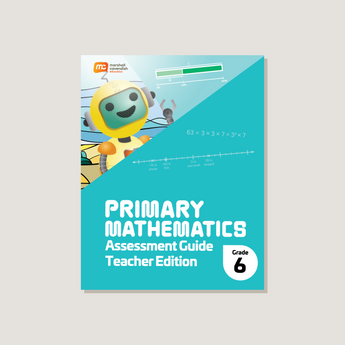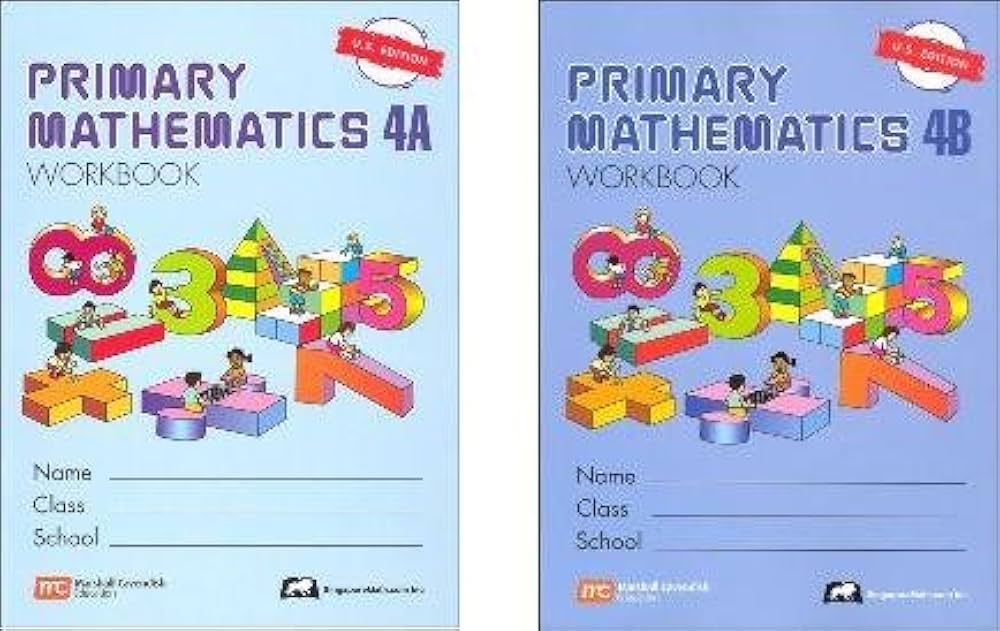Exploring real-life examples of overcoming struggles in primary math
Wiki Article
Unveiling the very best Shortcuts for Addressing Mathematics Problems Quickly
In the domain name of mathematics, efficiency is crucial. Grasping shortcuts can change the way people come close to issues. From leveraging the distributive home to employing fast reproduction techniques, these approaches improve both rate and accuracy. In addition, acknowledging patterns streamlines complicated estimations. As one checks out these methods, they might uncover unusual insights that can change their mathematical experience. What are one of the most effective strategies that can be quickly incorporated into day-to-day practice?Grasping Psychological Math Techniques
Just how can one enhance their computation rate without counting on calculators? Understanding mental mathematics methods provides a functional remedy. By utilizing strategies such as breaking numbers into smaller, convenient components, people can streamline complex estimations. When including two-digit numbers, rounding each number to the nearby 10 can make mental addition much easier before changing back to the initial worths.An additional effective strategy is to practice reproduction tables extensively, allowing fast recall of items (struggles in primary math). Additionally, acknowledging patterns in numbers can facilitate faster estimations, such as making use of the residential properties of even and strange numbers. Normal practice via video games and challenges can further refine these skills, making mental math much more user-friendly
Eventually, growing confidence in one's arithmetic capacities permits quicker decision-making and improves general mathematical efficiency. By incorporating these techniques, anybody can significantly improve their estimation speed.
Using the Distributive Residential Property
The Distributive Building is a basic idea in mathematics that simplifies computations by permitting multiplication across addition or reduction. It is crucial for pupils to comprehend its application via useful instances, which can boost their analytical skills. In addition, acknowledging common blunders can further strengthen their understanding and prevent errors in future estimations.Understanding the Distributive Home
Grasping the distributive home can substantially simplify mathematical computations. This fundamental residential property states that when multiplying a single term by an amount or distinction, one can disperse the multiplication across each term within the parentheses. In the expression a(b + c), one can rewrite it as abdominal + air conditioning. This technique not only simplifies calculations yet additionally improves understanding of just how numbers interact (struggles in primary math). The distributive property is especially helpful in algebra, where it assists in simplifying expressions and fixing formulas. Additionally, it prepares for a lot more complicated principles, such as factoring and polynomial operations. By grasping the distributive residential property, trainees can develop a strong structure for tackling a large range of mathematical challenges successfullyPractical Examples Illustrated
Why is it essential to use the distributive building in functional circumstances? The distributive home enables individuals to streamline intricate computations, making analytical extra reliable. When determining the complete price of numerous things, one can make use of the expression 5(2 + 3) to locate the complete expense of five things valued at $2 and $3. By dispersing, the estimation comes to be 5 × 2 + 5 × 3, generating a quicker outcome of $25. One more instance remains in algebra, where simplifying expressions like 3(x + 4) can be attained with circulation, resulting in 3x + 12. Such applications highlight the effectiveness of this residential property in various real-world situations, boosting both rate and precision in mathematical analytic.Typical Errors to Prevent
The distributive building is an effective tool in maths, typical mistakes can lead to wrong outcomes. When pupils forget to disperse the coefficient to each term within parentheses, one regular error occurs. For example, in the expression 3(x + 4), failing to use the property correctly can lead to leaving out the multiplication, producing an incorrect solution. Another error includes misapplying the residential or commercial property by adding rather than multiplying, specifically when unfavorable signs are involved. Additionally, students might forget to simplify the result, which can unknown mistakes made throughout circulation. Identifying and staying clear of these mistakes can enhance problem-solving efficiency and accuracy when making use of the distributive property in various mathematical contexts.Quick Reproduction Shortcuts
In the domain name of quick reproduction shortcuts, strategies like multiplying by powers of 10 and the increasing and halving approach attract attention. These strategies can substantially simplify computations, making them more available. Recognizing these shortcuts can boost performance in mathematical problem-solving.Multiplying by Powers of 10
When multiplying by powers of 10, the procedure becomes remarkably uncomplicated, as the operation mostly entails shifting the decimal point. For example, multiplying a number by 10 calls for moving the decimal one location to the right, while multiplying by 100 necessitates a change of 2 areas. This simpleness includes larger powers, where each additional no suggests an additional decimal shift. For instance, increasing 5.6 by 1,000 lead to 5,600. This method significantly improves speed and accuracy, as people can swiftly see this website picture the result without complex computations. Such performance is specifically helpful in mental math or when time is limited, permitting rapid problem-solving in numerous mathematical contexts. Mastering this method is necessary for anyone intending to enhance their arithmetic abilities.Doubling and Cutting In Half Method
The Increasing and Cutting in half Method provides a reliable strategy for quick multiplication, particularly when managing also numbers. This technique involves transforming a reproduction problem right into a simpler kind by either doubling among the numbers and cutting in half the various other. To calculate 16 × 25, one can halve 16 to obtain 8 and dual 25 to get 50, resulting in 8 × 50, which equals 400 (struggles in primary math). This approach simplifies computations, making them more convenient. It is specifically helpful in mental math, permitting people to overcome issues promptly and precisely. By leveraging this strategy, specialists and pupils can boost their numerical agility, thereby boosting general effectiveness in mathematical tasks
Effective Division Approaches
Although division often poses challenges for numerous students, employing efficient methods can substantially simplify the process. One effective technique is using compatible numbers, which involves rounding the divisor and returns to easier worths that are close view it to the original numbers. This strategy makes psychological computations much more manageable. An additional strategy is the estimation strategy, where students can find a rough answer before carrying out the specific division, providing a helpful criteria for accuracy.
The long division strategy remains a staple for splitting larger numbers. By breaking the process into smaller sized, extra absorbable actions, students can maintain clearness. The duplicated subtraction approach can also be handy, especially for those that have problem with even more abstract concepts. By methodically subtracting the divisor from the returns, people can imagine the procedure. Generally, these approaches can improve division abilities, causing quicker and more accurate problem-solving capabilities.
Rapid Enhancement and Reduction Methods
Exactly how can students enhance their speed and accuracy additionally and reduction? One efficient method is to use psychological mathematics techniques, such as breaking numbers right into smaller sized, more workable components. When adding 47 and 36, one can first add 40 and 30 to get 70, after that include the continuing to be 7 and 6 to arrive at 83. This method simplifies computations and minimizes mistakes.An additional strategy involves making use of the number line for visual learners, aiding them to see the connections between numbers and improve their understanding. In addition, exercising with tools like flashcards can reinforce quick recall of standard amounts and differences.
Additionally, students can gain from acquainting themselves with benchmark numbers, such as rounding to the nearby ten, which permits quicker evaluations. By including these methods into their technique, learners can greatly boost their speed and precision in basic math procedures.
Leveraging Estimate for Quick Calculations
Estimate works as an effective device for improving computation rate, matching psychological math strategies efficiently. By rounding numbers to their local whole values, individuals can click streamline complex computations, making it easier to come to an approximate outcome swiftly. For example, when faced with a trouble like 198 + 267, rounding to 200 + 270 returns a quick price quote of 470, enabling the solver to assess the precision of the last solution.Moreover, estimation is especially valuable in scenarios including multiplication and division. By rounding factors to easier numbers, one can swiftly gauge approximate products or ratios. This method not just saves time yet also aids in identifying prospective mistakes in computations.
Identifying Patterns and Formulas
Patterns and formulas are necessary devices in maths that allow people to solve issues extra efficiently. Acknowledging these patterns permits learners to determine partnerships between numbers and ideas, which can streamline complex computations. For circumstances, identifying the quadratic formula (ax ^ 2 + bx + c = 0) assists in fast remedies to various equations.Patterns in sequences, such as arithmetic or geometric progressions, assistance individuals anticipate future terms without substantial estimations. Solutions, on the various other hand, work as faster ways, enabling faster analytic by enveloping intricate partnerships right into manageable expressions.
Often Asked Inquiries
How Can I Boost My Emphasis While Fixing Mathematics Troubles Rapidly?
To improve emphasis while addressing math troubles rapidly, one can get rid of diversions, set particular goals, practice mindfulness strategies, take normal breaks, and keep a constant research study routine to improve focus and mental clarity.What Devices or Applications Aid with Quick Mathematics Problem-Solving?
Different tools and apps, such as Photomath, Microsoft Math Solver, and Desmos, enhance fast math problem-solving. These sources supply step-by-step services, graphing capabilities, and instantaneous comments, making them important for students and professionals alike.Exist Certain Math Shortcuts for Standard Tests?
Yes, specific mathematics faster ways for standard tests consist of methods like estimation, comprehending number properties, making use of the process of removal, and mastering usual formulas. These strategies boost rate and accuracy, enhancing total test efficiency.
Exactly how Do I Exercise Mathematics Shortcuts Properly?
To practice math shortcuts efficiently, individuals must consistently solve varied problems, use on the internet resources, and involve in timed drills. Consistency and representation on blunders enhance understanding, ultimately causing boosted rate and precision in calculations.Can Shortcuts Be Applied to Complex Mathematics Problems?
Shortcuts can certainly be related to intricate mathematics troubles, although their performance differs. Proficiency of fundamental concepts and calculated reasoning makes it possible for people to streamline procedures, making it less complicated to take on detailed estimations successfully.By using strategies such as damaging numbers right into smaller sized, workable parts, individuals can simplify complicated computations. Furthermore, identifying patterns in numbers can promote much faster estimations, such as making use of the properties of also and weird numbers. Estimate offers as a powerful tool for boosting estimation speed, complementing psychological mathematics methods successfully. By rounding numbers to their closest whole worths, people can simplify complex estimations, making it much easier to get here at an approximate result swiftly. Acknowledging these patterns enables learners to recognize connections between principles and numbers, which can simplify complex computations.
Report this wiki page